Network Cabling Insights and Trends - Ring and Ping Blog
Take a look at our carefully curated content for businesses in SoCal.
Take a look at our carefully curated content for businesses in SoCal.
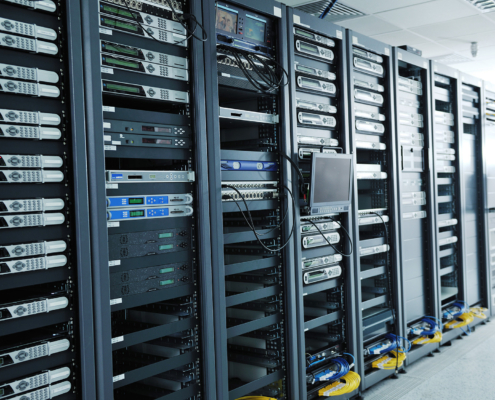 https://ringandping.com/wp-content/uploads/2025/06/network-server-room.jpg12502000Abstrakt Marketing/wp-content/uploads/2024/05/ringandping_logo.svgAbstrakt Marketing2025-06-13 09:27:522025-07-03 13:40:51Common Warehouse Network Issues and How to Avoid Them at Your Facility
https://ringandping.com/wp-content/uploads/2025/06/network-server-room.jpg12502000Abstrakt Marketing/wp-content/uploads/2024/05/ringandping_logo.svgAbstrakt Marketing2025-06-13 09:27:522025-07-03 13:40:51Common Warehouse Network Issues and How to Avoid Them at Your Facility https://ringandping.com/wp-content/uploads/2025/05/Savino-Del-Bene-6.jpg12502000Abstrakt Marketing/wp-content/uploads/2024/05/ringandping_logo.svgAbstrakt Marketing2025-06-03 09:26:092025-07-03 13:40:52Why Reliable Network Cabling is Vital for Large Warehousing Operations
https://ringandping.com/wp-content/uploads/2025/05/Savino-Del-Bene-6.jpg12502000Abstrakt Marketing/wp-content/uploads/2024/05/ringandping_logo.svgAbstrakt Marketing2025-06-03 09:26:092025-07-03 13:40:52Why Reliable Network Cabling is Vital for Large Warehousing Operations https://ringandping.com/wp-content/uploads/2025/05/Savino-Del-Bene-4.jpg12502000Abstrakt Marketing/wp-content/uploads/2024/05/ringandping_logo.svgAbstrakt Marketing2025-06-03 09:22:172025-07-03 13:40:52The Role of Network Cabling in Modern Warehouses
https://ringandping.com/wp-content/uploads/2025/05/Savino-Del-Bene-4.jpg12502000Abstrakt Marketing/wp-content/uploads/2024/05/ringandping_logo.svgAbstrakt Marketing2025-06-03 09:22:172025-07-03 13:40:52The Role of Network Cabling in Modern Warehouses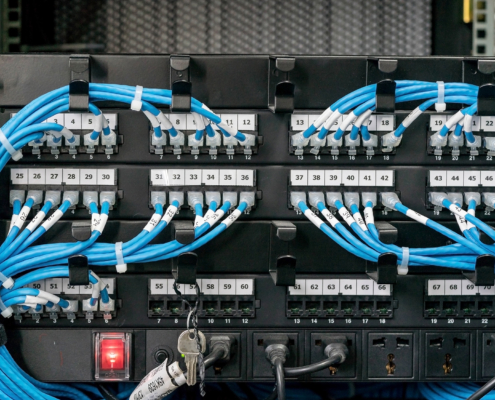 https://ringandping.com/wp-content/uploads/2025/06/network-switching-face-off.jpg12502000Abstrakt Marketing/wp-content/uploads/2024/05/ringandping_logo.svgAbstrakt Marketing2025-06-03 08:13:572025-07-03 13:40:53Choosing the Right Network Cabling for Your Warehouse: A Complete Guide
https://ringandping.com/wp-content/uploads/2025/06/network-switching-face-off.jpg12502000Abstrakt Marketing/wp-content/uploads/2024/05/ringandping_logo.svgAbstrakt Marketing2025-06-03 08:13:572025-07-03 13:40:53Choosing the Right Network Cabling for Your Warehouse: A Complete Guide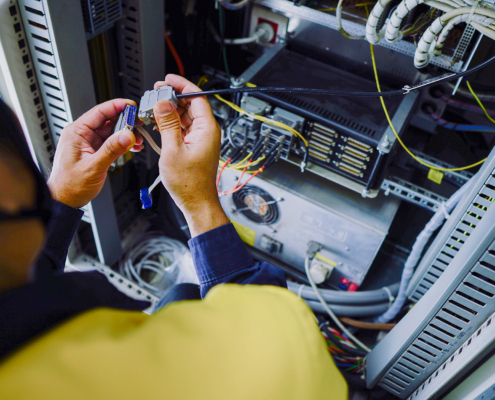 https://ringandping.com/wp-content/uploads/2025/05/Fiber-Optics-and-Premise-Distribution-Systems-PDS.jpg12502000Abstrakt Marketing/wp-content/uploads/2024/05/ringandping_logo.svgAbstrakt Marketing2025-05-23 15:21:512025-07-03 13:40:53Premise Distribution Systems (PDS) and Why Fiber Optics Are the Future
https://ringandping.com/wp-content/uploads/2025/05/Fiber-Optics-and-Premise-Distribution-Systems-PDS.jpg12502000Abstrakt Marketing/wp-content/uploads/2024/05/ringandping_logo.svgAbstrakt Marketing2025-05-23 15:21:512025-07-03 13:40:53Premise Distribution Systems (PDS) and Why Fiber Optics Are the Future https://ringandping.com/wp-content/uploads/2025/05/Tech-professionals-looking-at-laptop-while-working-on-network-system.jpg12502000Abstrakt Marketing/wp-content/uploads/2024/05/ringandping_logo.svgAbstrakt Marketing2025-05-23 10:55:452025-07-03 13:40:54Network Cabling Troubleshooting: A Complete Guide
https://ringandping.com/wp-content/uploads/2025/05/Tech-professionals-looking-at-laptop-while-working-on-network-system.jpg12502000Abstrakt Marketing/wp-content/uploads/2024/05/ringandping_logo.svgAbstrakt Marketing2025-05-23 10:55:452025-07-03 13:40:54Network Cabling Troubleshooting: A Complete Guide https://ringandping.com/wp-content/uploads/2025/04/Business-Electrical-Safety_-Understanding-Electrical-Load-Capacity.jpg12502000Abstrakt Marketing/wp-content/uploads/2024/05/ringandping_logo.svgAbstrakt Marketing2025-04-01 09:18:502025-07-03 13:40:54Business Electrical Safety: Understanding Electrical Load Capacity
https://ringandping.com/wp-content/uploads/2025/04/Business-Electrical-Safety_-Understanding-Electrical-Load-Capacity.jpg12502000Abstrakt Marketing/wp-content/uploads/2024/05/ringandping_logo.svgAbstrakt Marketing2025-04-01 09:18:502025-07-03 13:40:54Business Electrical Safety: Understanding Electrical Load Capacity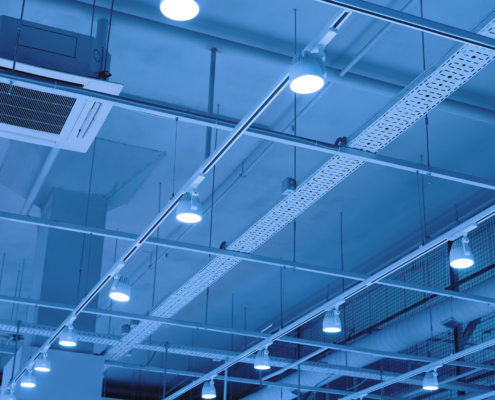 https://ringandping.com/wp-content/uploads/2025/04/FAQs-About-Commercial-Lighting-Services.jpg12502000Abstrakt Marketing/wp-content/uploads/2024/05/ringandping_logo.svgAbstrakt Marketing2025-04-01 09:06:332025-07-03 13:40:55FAQs About Commercial Lighting Services
https://ringandping.com/wp-content/uploads/2025/04/FAQs-About-Commercial-Lighting-Services.jpg12502000Abstrakt Marketing/wp-content/uploads/2024/05/ringandping_logo.svgAbstrakt Marketing2025-04-01 09:06:332025-07-03 13:40:55FAQs About Commercial Lighting Services https://ringandping.com/wp-content/uploads/2025/04/When-to-Upgrade-vs.-Replace-Your-Current-System.jpg12502000Abstrakt Marketing/wp-content/uploads/2024/05/ringandping_logo.svgAbstrakt Marketing2025-04-01 08:53:592025-07-03 13:40:55Lighting Retrofits: When to Upgrade vs. Replace Your Current System
https://ringandping.com/wp-content/uploads/2025/04/When-to-Upgrade-vs.-Replace-Your-Current-System.jpg12502000Abstrakt Marketing/wp-content/uploads/2024/05/ringandping_logo.svgAbstrakt Marketing2025-04-01 08:53:592025-07-03 13:40:55Lighting Retrofits: When to Upgrade vs. Replace Your Current System https://ringandping.com/wp-content/uploads/2025/04/LED-vs.-Traditional-Lighting_-Which-Is-Best-for-Your-Business.jpg12502000Abstrakt Marketing/wp-content/uploads/2024/05/ringandping_logo.svgAbstrakt Marketing2025-04-01 08:48:102025-07-03 13:40:55LED vs. Traditional Lighting: Which Is Best for Your Business?
https://ringandping.com/wp-content/uploads/2025/04/LED-vs.-Traditional-Lighting_-Which-Is-Best-for-Your-Business.jpg12502000Abstrakt Marketing/wp-content/uploads/2024/05/ringandping_logo.svgAbstrakt Marketing2025-04-01 08:48:102025-07-03 13:40:55LED vs. Traditional Lighting: Which Is Best for Your Business? https://ringandping.com/wp-content/uploads/2025/03/What-to-Know-Before-You-Plan-an-Office-Lighting-Upgrade.jpg12502000Abstrakt Marketing/wp-content/uploads/2024/05/ringandping_logo.svgAbstrakt Marketing2025-03-28 14:26:512025-07-03 13:40:56Signs Your Office Lighting System Needs an Upgrade
https://ringandping.com/wp-content/uploads/2025/03/What-to-Know-Before-You-Plan-an-Office-Lighting-Upgrade.jpg12502000Abstrakt Marketing/wp-content/uploads/2024/05/ringandping_logo.svgAbstrakt Marketing2025-03-28 14:26:512025-07-03 13:40:56Signs Your Office Lighting System Needs an Upgrade https://ringandping.com/wp-content/uploads/2025/03/Modern-stairs-and-lights-commercial-building.jpg12502000Abstrakt Marketing/wp-content/uploads/2024/05/ringandping_logo.svgAbstrakt Marketing2025-03-26 08:49:352025-07-03 13:40:5610 Creative Ways to Transform Commercial Spaces With Lighting
https://ringandping.com/wp-content/uploads/2025/03/Modern-stairs-and-lights-commercial-building.jpg12502000Abstrakt Marketing/wp-content/uploads/2024/05/ringandping_logo.svgAbstrakt Marketing2025-03-26 08:49:352025-07-03 13:40:5610 Creative Ways to Transform Commercial Spaces With Lighting https://ringandping.com/wp-content/uploads/2025/03/Electrical-engineers-check-the-operation-of-the-main-electrical-control-panels-and-switches-record-values-on-tablets.jpg12502000Abstrakt Marketing/wp-content/uploads/2024/05/ringandping_logo.svgAbstrakt Marketing2025-03-26 08:41:002025-07-03 13:40:57What to Consider When Planning Electrical Systems in New Buildings
https://ringandping.com/wp-content/uploads/2025/03/Electrical-engineers-check-the-operation-of-the-main-electrical-control-panels-and-switches-record-values-on-tablets.jpg12502000Abstrakt Marketing/wp-content/uploads/2024/05/ringandping_logo.svgAbstrakt Marketing2025-03-26 08:41:002025-07-03 13:40:57What to Consider When Planning Electrical Systems in New Buildings https://ringandping.com/wp-content/uploads/2025/03/Electrical-engineers-test-electrical-installations-and-electrical-wiring-by-measuring-them-with-a-multimeter.jpg12502000Abstrakt Marketing/wp-content/uploads/2024/05/ringandping_logo.svgAbstrakt Marketing2025-03-26 08:34:592025-07-03 13:40:57How Smart Technology Improves Commercial Electrical Systems
https://ringandping.com/wp-content/uploads/2025/03/Electrical-engineers-test-electrical-installations-and-electrical-wiring-by-measuring-them-with-a-multimeter.jpg12502000Abstrakt Marketing/wp-content/uploads/2024/05/ringandping_logo.svgAbstrakt Marketing2025-03-26 08:34:592025-07-03 13:40:57How Smart Technology Improves Commercial Electrical Systems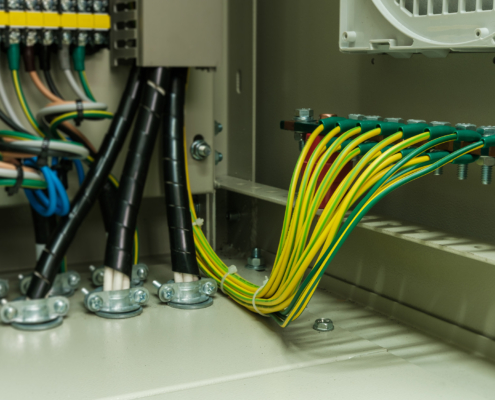 https://ringandping.com/wp-content/uploads/2025/02/Ground-wire-on-the-bar-ground-in-the-electrical-control-cabinet.jpg12502000Abstrakt Marketing/wp-content/uploads/2024/05/ringandping_logo.svgAbstrakt Marketing2025-02-10 07:29:112025-07-03 13:40:58Why Every Business Should Have a Plan for Emergency Electrical Services
https://ringandping.com/wp-content/uploads/2025/02/Ground-wire-on-the-bar-ground-in-the-electrical-control-cabinet.jpg12502000Abstrakt Marketing/wp-content/uploads/2024/05/ringandping_logo.svgAbstrakt Marketing2025-02-10 07:29:112025-07-03 13:40:58Why Every Business Should Have a Plan for Emergency Electrical Services https://ringandping.com/wp-content/uploads/2025/02/An-empty-gray-call-center-office-with-tables-and-chairs-well-lit.jpg12502000Abstrakt Marketing/wp-content/uploads/2024/05/ringandping_logo.svgAbstrakt Marketing2025-02-05 13:49:442025-07-03 13:40:58How Energy-Efficient Commercial Lighting Can Save You Money
https://ringandping.com/wp-content/uploads/2025/02/An-empty-gray-call-center-office-with-tables-and-chairs-well-lit.jpg12502000Abstrakt Marketing/wp-content/uploads/2024/05/ringandping_logo.svgAbstrakt Marketing2025-02-05 13:49:442025-07-03 13:40:58How Energy-Efficient Commercial Lighting Can Save You Money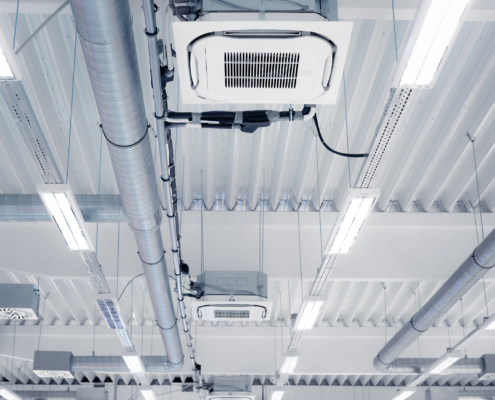 https://ringandping.com/wp-content/uploads/2025/02/Ceiling-mounted-cassette-type-air-condition-units-with-other-parts-of-ventilation-system-located-inside-commercial-hall.jpg12502000Abstrakt Marketing/wp-content/uploads/2024/05/ringandping_logo.svgAbstrakt Marketing2025-02-05 13:42:372025-07-03 13:40:58How to Maximize the ROI of Your Commercial Lighting Upgrades
https://ringandping.com/wp-content/uploads/2025/02/Ceiling-mounted-cassette-type-air-condition-units-with-other-parts-of-ventilation-system-located-inside-commercial-hall.jpg12502000Abstrakt Marketing/wp-content/uploads/2024/05/ringandping_logo.svgAbstrakt Marketing2025-02-05 13:42:372025-07-03 13:40:58How to Maximize the ROI of Your Commercial Lighting Upgrades https://ringandping.com/wp-content/uploads/2025/01/The-Role-of-Design-Build-Electrical-Contractors-in-Business-Infrastructures.jpg12502000Abstrakt Marketing/wp-content/uploads/2024/05/ringandping_logo.svgAbstrakt Marketing2025-01-23 08:26:532025-07-03 13:40:59The Role of Design-Build Electrical Contractors in Business Infrastructures
https://ringandping.com/wp-content/uploads/2025/01/The-Role-of-Design-Build-Electrical-Contractors-in-Business-Infrastructures.jpg12502000Abstrakt Marketing/wp-content/uploads/2024/05/ringandping_logo.svgAbstrakt Marketing2025-01-23 08:26:532025-07-03 13:40:59The Role of Design-Build Electrical Contractors in Business Infrastructures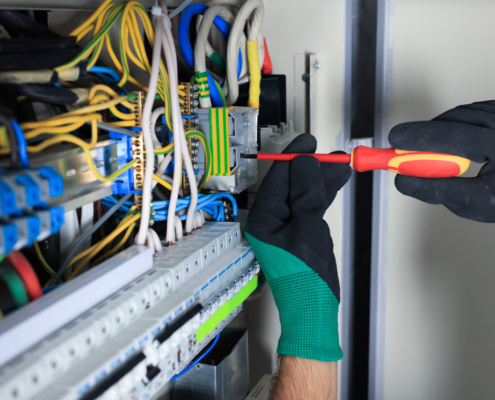 https://ringandping.com/wp-content/uploads/2025/01/How-Commercial-Electrical-Maintenance-Safeguards-Your-Business-From-Downtime.jpg12502000Abstrakt Marketing/wp-content/uploads/2024/05/ringandping_logo.svgAbstrakt Marketing2025-01-21 04:35:492025-07-03 13:40:59How Commercial Electrical Maintenance Safeguards Your Business From Downtime
https://ringandping.com/wp-content/uploads/2025/01/How-Commercial-Electrical-Maintenance-Safeguards-Your-Business-From-Downtime.jpg12502000Abstrakt Marketing/wp-content/uploads/2024/05/ringandping_logo.svgAbstrakt Marketing2025-01-21 04:35:492025-07-03 13:40:59How Commercial Electrical Maintenance Safeguards Your Business From Downtime https://ringandping.com/wp-content/uploads/2025/01/How-to-Choose-the-Right-Electrical-Contractor-for-Your-Business.jpg12502000Abstrakt Marketing/wp-content/uploads/2024/05/ringandping_logo.svgAbstrakt Marketing2025-01-21 04:29:272025-07-03 13:40:59How to Choose the Right Electrical Contractor for Your Business
https://ringandping.com/wp-content/uploads/2025/01/How-to-Choose-the-Right-Electrical-Contractor-for-Your-Business.jpg12502000Abstrakt Marketing/wp-content/uploads/2024/05/ringandping_logo.svgAbstrakt Marketing2025-01-21 04:29:272025-07-03 13:40:59How to Choose the Right Electrical Contractor for Your Business https://ringandping.com/wp-content/uploads/2025/01/How-Professional-Electrical-Installations-Enhance-Safety-and-Reliability-in-Your-Workplace.jpg12502000Abstrakt Marketing/wp-content/uploads/2024/05/ringandping_logo.svgAbstrakt Marketing2025-01-21 04:23:222025-07-03 13:41:00How Professional Electrical Installations Enhance Safety and Reliability in Your Workplace
https://ringandping.com/wp-content/uploads/2025/01/How-Professional-Electrical-Installations-Enhance-Safety-and-Reliability-in-Your-Workplace.jpg12502000Abstrakt Marketing/wp-content/uploads/2024/05/ringandping_logo.svgAbstrakt Marketing2025-01-21 04:23:222025-07-03 13:41:00How Professional Electrical Installations Enhance Safety and Reliability in Your Workplace https://ringandping.com/wp-content/uploads/2024/12/Electrical-System-Upgrades-for-Commercial-Properties.jpg12502000Abstrakt Marketing/wp-content/uploads/2024/05/ringandping_logo.svgAbstrakt Marketing2024-12-18 10:23:002025-07-03 13:41:00Electrical System Upgrades for Commercial Properties
https://ringandping.com/wp-content/uploads/2024/12/Electrical-System-Upgrades-for-Commercial-Properties.jpg12502000Abstrakt Marketing/wp-content/uploads/2024/05/ringandping_logo.svgAbstrakt Marketing2024-12-18 10:23:002025-07-03 13:41:00Electrical System Upgrades for Commercial Properties https://ringandping.com/wp-content/uploads/2024/12/Common-Commercial-Electrical-Issues-and-How-to-Fix-Them.jpg12502000Abstrakt Marketing/wp-content/uploads/2024/05/ringandping_logo.svgAbstrakt Marketing2024-12-13 08:01:452025-07-03 13:41:01Common Commercial Electrical Issues and How to Fix Them
https://ringandping.com/wp-content/uploads/2024/12/Common-Commercial-Electrical-Issues-and-How-to-Fix-Them.jpg12502000Abstrakt Marketing/wp-content/uploads/2024/05/ringandping_logo.svgAbstrakt Marketing2024-12-13 08:01:452025-07-03 13:41:01Common Commercial Electrical Issues and How to Fix Them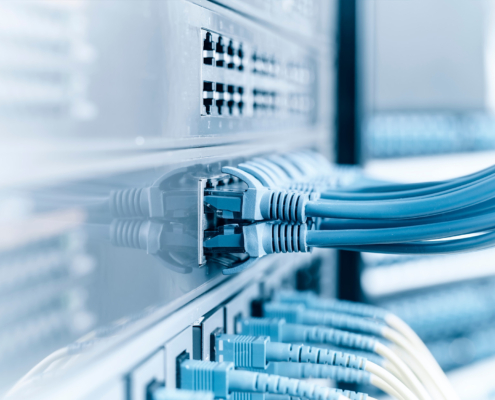 https://ringandping.com/wp-content/uploads/2014/04/Network-Cabling-Installation-Checklist.jpg12502000Abstrakt Marketing/wp-content/uploads/2024/05/ringandping_logo.svgAbstrakt Marketing2024-11-18 12:49:382025-07-03 13:41:01Network Cabling Installation Checklist
https://ringandping.com/wp-content/uploads/2014/04/Network-Cabling-Installation-Checklist.jpg12502000Abstrakt Marketing/wp-content/uploads/2024/05/ringandping_logo.svgAbstrakt Marketing2024-11-18 12:49:382025-07-03 13:41:01Network Cabling Installation Checklist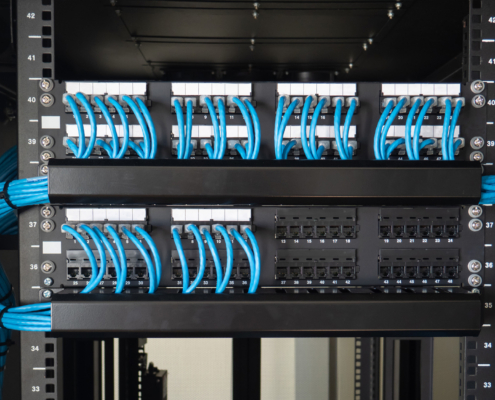 https://ringandping.com/wp-content/uploads/2024/11/Single-Service-Provider-Benefits-for-Network-Cabling-Services-and-Beyond.jpg12502000Abstrakt Marketing/wp-content/uploads/2024/05/ringandping_logo.svgAbstrakt Marketing2024-11-12 13:18:122025-07-03 13:41:01Single Service Provider Benefits for Network Cabling Services and Beyond
https://ringandping.com/wp-content/uploads/2024/11/Single-Service-Provider-Benefits-for-Network-Cabling-Services-and-Beyond.jpg12502000Abstrakt Marketing/wp-content/uploads/2024/05/ringandping_logo.svgAbstrakt Marketing2024-11-12 13:18:122025-07-03 13:41:01Single Service Provider Benefits for Network Cabling Services and Beyond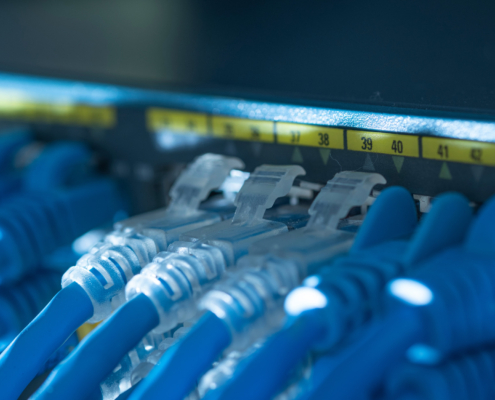 https://ringandping.com/wp-content/uploads/2024/11/5-Common-Network-Cabling-Mistakes-to-Avoid.jpg12502000Abstrakt Marketing/wp-content/uploads/2024/05/ringandping_logo.svgAbstrakt Marketing2024-11-12 12:23:112025-07-03 13:41:025 All Too Common Network Cabling Installation Mistakes
https://ringandping.com/wp-content/uploads/2024/11/5-Common-Network-Cabling-Mistakes-to-Avoid.jpg12502000Abstrakt Marketing/wp-content/uploads/2024/05/ringandping_logo.svgAbstrakt Marketing2024-11-12 12:23:112025-07-03 13:41:025 All Too Common Network Cabling Installation Mistakes https://ringandping.com/wp-content/uploads/2024/11/Security-camera-on-office-building-safety-concept.jpg12502000Abstrakt Marketing/wp-content/uploads/2024/05/ringandping_logo.svgAbstrakt Marketing2024-11-08 15:22:352025-07-03 13:41:02Selecting Security Solutions That Work for Your Business
https://ringandping.com/wp-content/uploads/2024/11/Security-camera-on-office-building-safety-concept.jpg12502000Abstrakt Marketing/wp-content/uploads/2024/05/ringandping_logo.svgAbstrakt Marketing2024-11-08 15:22:352025-07-03 13:41:02Selecting Security Solutions That Work for Your Business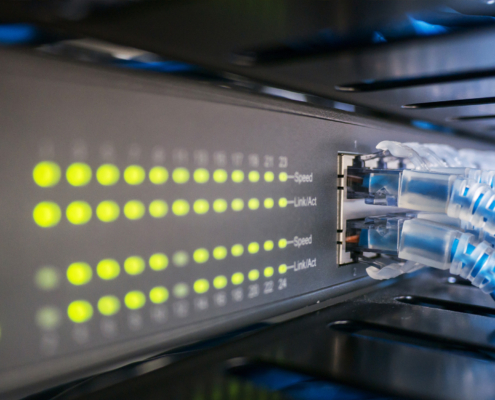 https://ringandping.com/wp-content/uploads/2024/11/Cat5-vs-Cat-6-Choosing-the-Right-Cable.jpg12502000Abstrakt Marketing/wp-content/uploads/2024/05/ringandping_logo.svgAbstrakt Marketing2024-11-08 10:35:462025-07-03 13:41:02Cat5 vs Cat 6: Choosing the Right Cable
https://ringandping.com/wp-content/uploads/2024/11/Cat5-vs-Cat-6-Choosing-the-Right-Cable.jpg12502000Abstrakt Marketing/wp-content/uploads/2024/05/ringandping_logo.svgAbstrakt Marketing2024-11-08 10:35:462025-07-03 13:41:02Cat5 vs Cat 6: Choosing the Right Cable https://ringandping.com/wp-content/uploads/2024/10/Revolutionizing-Surveillance-Across-Industries.jpg12502000Abstrakt Marketing/wp-content/uploads/2024/05/ringandping_logo.svgAbstrakt Marketing2024-10-15 08:29:332025-07-03 13:41:03Revolutionizing Surveillance Across Industries With AI Security Cameras
https://ringandping.com/wp-content/uploads/2024/10/Revolutionizing-Surveillance-Across-Industries.jpg12502000Abstrakt Marketing/wp-content/uploads/2024/05/ringandping_logo.svgAbstrakt Marketing2024-10-15 08:29:332025-07-03 13:41:03Revolutionizing Surveillance Across Industries With AI Security Cameras https://ringandping.com/wp-content/uploads/2024/10/Copper-Cables-and-Fiber-Optics.jpg12502000Abstrakt Marketing/wp-content/uploads/2024/05/ringandping_logo.svgAbstrakt Marketing2024-10-15 08:21:192025-07-03 13:41:03Copper Cables and Fiber Optics: Which Is Right for Your Network?
https://ringandping.com/wp-content/uploads/2024/10/Copper-Cables-and-Fiber-Optics.jpg12502000Abstrakt Marketing/wp-content/uploads/2024/05/ringandping_logo.svgAbstrakt Marketing2024-10-15 08:21:192025-07-03 13:41:03Copper Cables and Fiber Optics: Which Is Right for Your Network?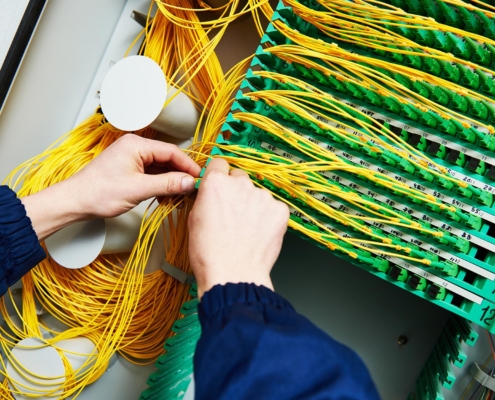 https://ringandping.com/wp-content/uploads/2024/08/Worker-installing-fiber-optic-cabling.jpg12502000Abstrakt Marketing/wp-content/uploads/2024/05/ringandping_logo.svgAbstrakt Marketing2024-09-03 22:36:532025-07-03 13:41:04How to Choose the Best Fiber Optic Cable
https://ringandping.com/wp-content/uploads/2024/08/Worker-installing-fiber-optic-cabling.jpg12502000Abstrakt Marketing/wp-content/uploads/2024/05/ringandping_logo.svgAbstrakt Marketing2024-09-03 22:36:532025-07-03 13:41:04How to Choose the Best Fiber Optic Cable https://ringandping.com/wp-content/uploads/2024/08/Preparing-for-Fiber-Optic-Installation-A-Comprehensive-Guide.jpg12502000Abstrakt Marketing/wp-content/uploads/2024/05/ringandping_logo.svgAbstrakt Marketing2024-08-26 15:10:172025-07-03 13:41:04Preparing for Fiber Optic Installation: A Comprehensive Guide
https://ringandping.com/wp-content/uploads/2024/08/Preparing-for-Fiber-Optic-Installation-A-Comprehensive-Guide.jpg12502000Abstrakt Marketing/wp-content/uploads/2024/05/ringandping_logo.svgAbstrakt Marketing2024-08-26 15:10:172025-07-03 13:41:04Preparing for Fiber Optic Installation: A Comprehensive Guide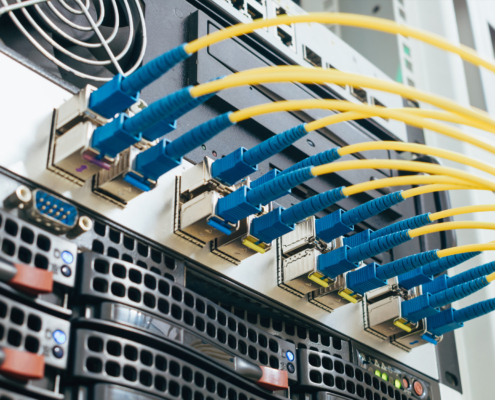 https://ringandping.com/wp-content/uploads/2024/08/The-Basics-of-Commercial-Fiber-Optic-Cables.jpg12502000Abstrakt Marketing/wp-content/uploads/2024/05/ringandping_logo.svgAbstrakt Marketing2024-08-26 15:00:542025-07-03 13:41:04The Basics of Commercial Fiber Optic Cables
https://ringandping.com/wp-content/uploads/2024/08/The-Basics-of-Commercial-Fiber-Optic-Cables.jpg12502000Abstrakt Marketing/wp-content/uploads/2024/05/ringandping_logo.svgAbstrakt Marketing2024-08-26 15:00:542025-07-03 13:41:04The Basics of Commercial Fiber Optic Cables https://ringandping.com/wp-content/uploads/2024/07/Installing-Network-Cables-Everything-You-Need-to-Know.jpg12502000Abstrakt Marketing/wp-content/uploads/2024/05/ringandping_logo.svgAbstrakt Marketing2024-07-22 14:21:562025-07-03 13:41:05Installing Network Cables: Everything You Need to Know
https://ringandping.com/wp-content/uploads/2024/07/Installing-Network-Cables-Everything-You-Need-to-Know.jpg12502000Abstrakt Marketing/wp-content/uploads/2024/05/ringandping_logo.svgAbstrakt Marketing2024-07-22 14:21:562025-07-03 13:41:05Installing Network Cables: Everything You Need to Know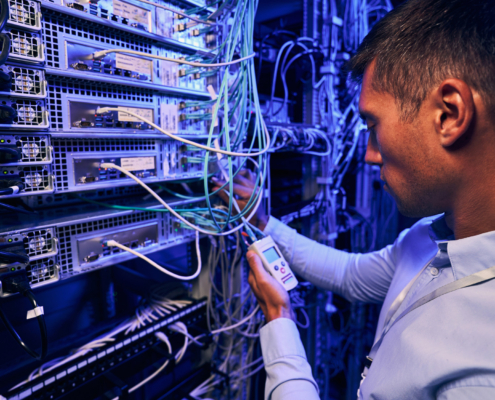 https://ringandping.com/wp-content/uploads/2024/07/Fiber-Optic-Installations.jpg12502000Abstrakt Marketing/wp-content/uploads/2024/05/ringandping_logo.svgAbstrakt Marketing2024-07-22 14:14:522025-07-03 13:41:05Fiber Optic Installations
https://ringandping.com/wp-content/uploads/2024/07/Fiber-Optic-Installations.jpg12502000Abstrakt Marketing/wp-content/uploads/2024/05/ringandping_logo.svgAbstrakt Marketing2024-07-22 14:14:522025-07-03 13:41:05Fiber Optic Installations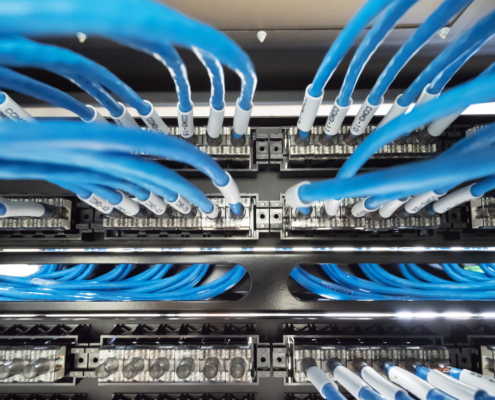 https://ringandping.com/wp-content/uploads/2024/07/Structured-Network-Cabling-and-Its-Place-in-Modern-Business.jpg12502000Abstrakt Marketing/wp-content/uploads/2024/05/ringandping_logo.svgAbstrakt Marketing2024-07-19 15:24:272025-07-03 13:41:05Structured Network Cabling and Its Place in Modern Business
https://ringandping.com/wp-content/uploads/2024/07/Structured-Network-Cabling-and-Its-Place-in-Modern-Business.jpg12502000Abstrakt Marketing/wp-content/uploads/2024/05/ringandping_logo.svgAbstrakt Marketing2024-07-19 15:24:272025-07-03 13:41:05Structured Network Cabling and Its Place in Modern Business https://ringandping.com/wp-content/uploads/2024/07/Revolutionizing-Your-Security-with-Intelligent-Video-Analytics.jpg12502000Abstrakt Marketing/wp-content/uploads/2024/05/ringandping_logo.svgAbstrakt Marketing2024-07-12 14:50:432025-07-03 13:41:06Revolutionizing Your Security with Intelligent Video Analytics
https://ringandping.com/wp-content/uploads/2024/07/Revolutionizing-Your-Security-with-Intelligent-Video-Analytics.jpg12502000Abstrakt Marketing/wp-content/uploads/2024/05/ringandping_logo.svgAbstrakt Marketing2024-07-12 14:50:432025-07-03 13:41:06Revolutionizing Your Security with Intelligent Video Analytics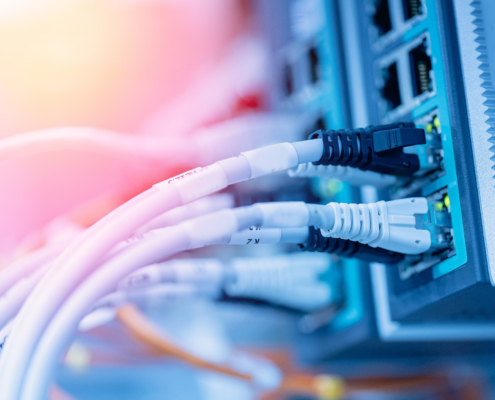 https://ringandping.com/wp-content/uploads/2024/06/Closeup-lan-network-cables-connected-in-date-switches-blue-color.jpg12502000Abstrakt Marketing/wp-content/uploads/2024/05/ringandping_logo.svgAbstrakt Marketing2024-06-25 11:41:482025-07-03 13:41:06Choosing the Right Network Cabling Service for Your Business
https://ringandping.com/wp-content/uploads/2024/06/Closeup-lan-network-cables-connected-in-date-switches-blue-color.jpg12502000Abstrakt Marketing/wp-content/uploads/2024/05/ringandping_logo.svgAbstrakt Marketing2024-06-25 11:41:482025-07-03 13:41:06Choosing the Right Network Cabling Service for Your Business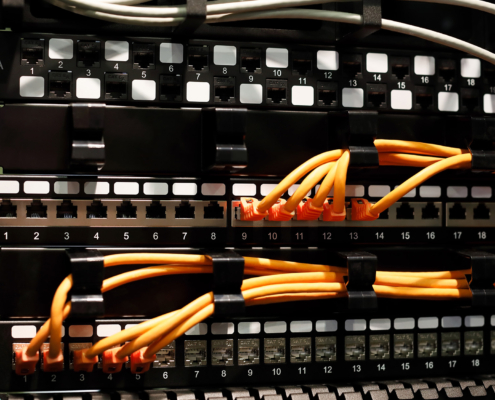 https://ringandping.com/wp-content/uploads/2024/06/Indoor-network-cabinet-with-CAT6A-patch-panels.jpg12502000Abstrakt Marketing/wp-content/uploads/2024/05/ringandping_logo.svgAbstrakt Marketing2024-06-25 11:21:422025-07-03 13:41:07Unraveling the Twists: Comparing Cat6 vs Cat6a Ethernet Cables
https://ringandping.com/wp-content/uploads/2024/06/Indoor-network-cabinet-with-CAT6A-patch-panels.jpg12502000Abstrakt Marketing/wp-content/uploads/2024/05/ringandping_logo.svgAbstrakt Marketing2024-06-25 11:21:422025-07-03 13:41:07Unraveling the Twists: Comparing Cat6 vs Cat6a Ethernet Cables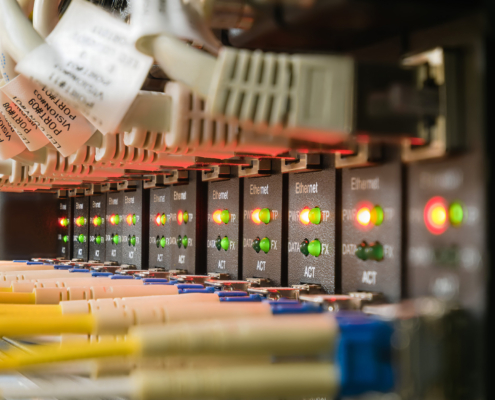 https://ringandping.com/wp-content/uploads/2024/06/Network-connection-device-with-network-switch.jpg12502000Abstrakt Marketing/wp-content/uploads/2024/05/ringandping_logo.svgAbstrakt Marketing2024-06-25 11:01:512025-07-03 13:41:07Understanding the Difference Between Cat5e vs 6
https://ringandping.com/wp-content/uploads/2024/06/Network-connection-device-with-network-switch.jpg12502000Abstrakt Marketing/wp-content/uploads/2024/05/ringandping_logo.svgAbstrakt Marketing2024-06-25 11:01:512025-07-03 13:41:07Understanding the Difference Between Cat5e vs 6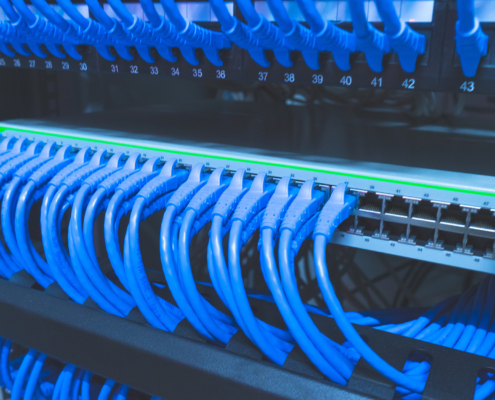 https://ringandping.com/wp-content/uploads/2024/06/Close-up-LAN-cable-on-background.jpg12502000Abstrakt Marketing/wp-content/uploads/2024/05/ringandping_logo.svgAbstrakt Marketing2024-06-17 11:48:252025-07-03 13:41:08CAT5e Ethernet Cables: Is Upgrading Worth It for Your Business?
https://ringandping.com/wp-content/uploads/2024/06/Close-up-LAN-cable-on-background.jpg12502000Abstrakt Marketing/wp-content/uploads/2024/05/ringandping_logo.svgAbstrakt Marketing2024-06-17 11:48:252025-07-03 13:41:08CAT5e Ethernet Cables: Is Upgrading Worth It for Your Business?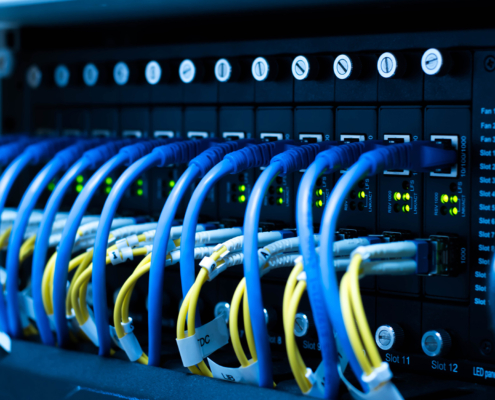 https://ringandping.com/wp-content/uploads/2024/06/Side-view-of-network-switch-and-ethernet-cables.jpg12502000Abstrakt Marketing/wp-content/uploads/2024/05/ringandping_logo.svgAbstrakt Marketing2024-06-17 11:21:412025-07-03 13:41:08Mastering CAT5e Network Cable Management for Peak Performance
https://ringandping.com/wp-content/uploads/2024/06/Side-view-of-network-switch-and-ethernet-cables.jpg12502000Abstrakt Marketing/wp-content/uploads/2024/05/ringandping_logo.svgAbstrakt Marketing2024-06-17 11:21:412025-07-03 13:41:08Mastering CAT5e Network Cable Management for Peak Performance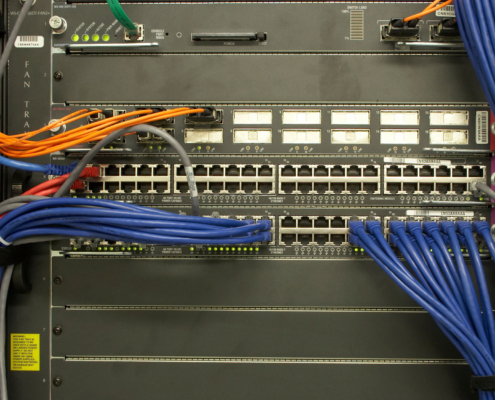 https://ringandping.com/wp-content/uploads/2024/06/Front-view-of-a-network-device.jpg12502000Abstrakt Marketing/wp-content/uploads/2024/05/ringandping_logo.svgAbstrakt Marketing2024-06-17 11:01:162025-07-03 13:41:08Key Considerations for Cat5e Installations
https://ringandping.com/wp-content/uploads/2024/06/Front-view-of-a-network-device.jpg12502000Abstrakt Marketing/wp-content/uploads/2024/05/ringandping_logo.svgAbstrakt Marketing2024-06-17 11:01:162025-07-03 13:41:08Key Considerations for Cat5e Installations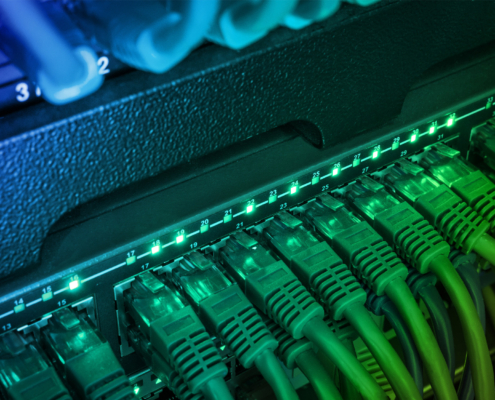 https://ringandping.com/wp-content/uploads/2024/06/Cat5e-Cables-Everything-You-Need-to-Know.jpg12502000Abstrakt Marketing/wp-content/uploads/2024/05/ringandping_logo.svgAbstrakt Marketing2024-06-17 08:18:262025-07-03 13:41:09Cat5e Cables: Everything You Need to Know
https://ringandping.com/wp-content/uploads/2024/06/Cat5e-Cables-Everything-You-Need-to-Know.jpg12502000Abstrakt Marketing/wp-content/uploads/2024/05/ringandping_logo.svgAbstrakt Marketing2024-06-17 08:18:262025-07-03 13:41:09Cat5e Cables: Everything You Need to Know https://ringandping.com/wp-content/uploads/2024/04/Connection-procedure-UTP-cable-Twisting-Cable-Tool.jpg12502000Abstrakt Marketing/wp-content/uploads/2024/05/ringandping_logo.svgAbstrakt Marketing2024-04-10 19:46:482025-07-03 13:41:09Mastering Network Cable Testing for Reliability
https://ringandping.com/wp-content/uploads/2024/04/Connection-procedure-UTP-cable-Twisting-Cable-Tool.jpg12502000Abstrakt Marketing/wp-content/uploads/2024/05/ringandping_logo.svgAbstrakt Marketing2024-04-10 19:46:482025-07-03 13:41:09Mastering Network Cable Testing for Reliability https://ringandping.com/wp-content/uploads/2024/04/Close-up-view-of-modern-internet-network-switch-with-plugged-ethernet-cables.-Blinking-green-light.jpg12502000Abstrakt Marketing/wp-content/uploads/2024/05/ringandping_logo.svgAbstrakt Marketing2024-04-10 19:34:142025-07-03 13:41:10Tailoring Network Design for Efficient Cat Cabling
https://ringandping.com/wp-content/uploads/2024/04/Close-up-view-of-modern-internet-network-switch-with-plugged-ethernet-cables.-Blinking-green-light.jpg12502000Abstrakt Marketing/wp-content/uploads/2024/05/ringandping_logo.svgAbstrakt Marketing2024-04-10 19:34:142025-07-03 13:41:10Tailoring Network Design for Efficient Cat Cabling https://ringandping.com/wp-content/uploads/2024/04/Closeup-of-the-rear-of-a-data-center.-Blue-version._.jpg12502000Abstrakt Marketing/wp-content/uploads/2024/05/ringandping_logo.svgAbstrakt Marketing2024-04-10 18:27:432025-07-03 13:41:10Cat5 vs Cat5e vs Cat6 vs Cat6a: Choosing the Ideal Ethernet Cable
https://ringandping.com/wp-content/uploads/2024/04/Closeup-of-the-rear-of-a-data-center.-Blue-version._.jpg12502000Abstrakt Marketing/wp-content/uploads/2024/05/ringandping_logo.svgAbstrakt Marketing2024-04-10 18:27:432025-07-03 13:41:10Cat5 vs Cat5e vs Cat6 vs Cat6a: Choosing the Ideal Ethernet Cable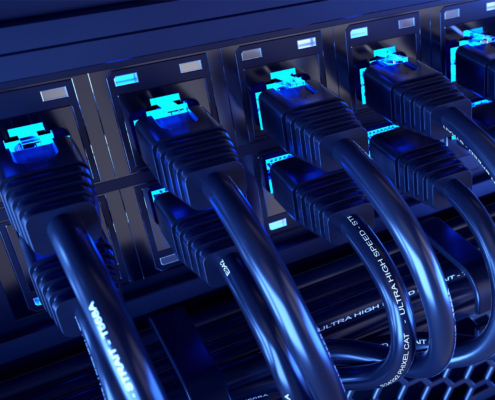 https://ringandping.com/wp-content/uploads/2024/04/Cloud-computing-closeup-of-high-performance-server-working.jpg12502000Abstrakt Marketing/wp-content/uploads/2024/05/ringandping_logo.svgAbstrakt Marketing2024-04-10 16:13:432025-07-03 13:41:10Master Your Connections: The Essential Guide to Network Cables
https://ringandping.com/wp-content/uploads/2024/04/Cloud-computing-closeup-of-high-performance-server-working.jpg12502000Abstrakt Marketing/wp-content/uploads/2024/05/ringandping_logo.svgAbstrakt Marketing2024-04-10 16:13:432025-07-03 13:41:10Master Your Connections: The Essential Guide to Network Cables https://ringandping.com/wp-content/uploads/2015/07/Emergency-Alert-Systems-and-Why-Your-Business-Needs-One.jpg12502000Abstrakt Marketing/wp-content/uploads/2024/05/ringandping_logo.svgAbstrakt Marketing2015-07-21 18:49:242025-07-03 13:41:11Emergency Alert Systems and Why Your Business Needs One
https://ringandping.com/wp-content/uploads/2015/07/Emergency-Alert-Systems-and-Why-Your-Business-Needs-One.jpg12502000Abstrakt Marketing/wp-content/uploads/2024/05/ringandping_logo.svgAbstrakt Marketing2015-07-21 18:49:242025-07-03 13:41:11Emergency Alert Systems and Why Your Business Needs One https://ringandping.com/wp-content/uploads/2015/05/Going-Green-With-Low-Smoke-Zero-Halogen-Cables.jpg12502000Abstrakt Marketing/wp-content/uploads/2024/05/ringandping_logo.svgAbstrakt Marketing2015-05-25 18:31:512025-07-03 13:41:12Going Green With Low Smoke Zero Halogen Cables
https://ringandping.com/wp-content/uploads/2015/05/Going-Green-With-Low-Smoke-Zero-Halogen-Cables.jpg12502000Abstrakt Marketing/wp-content/uploads/2024/05/ringandping_logo.svgAbstrakt Marketing2015-05-25 18:31:512025-07-03 13:41:12Going Green With Low Smoke Zero Halogen Cables https://ringandping.com/wp-content/uploads/2015/04/Wiring-for-Wireless.jpg12502000Abstrakt Marketing/wp-content/uploads/2024/05/ringandping_logo.svgAbstrakt Marketing2015-04-08 18:22:192025-07-03 13:41:12Wiring for Wireless
https://ringandping.com/wp-content/uploads/2015/04/Wiring-for-Wireless.jpg12502000Abstrakt Marketing/wp-content/uploads/2024/05/ringandping_logo.svgAbstrakt Marketing2015-04-08 18:22:192025-07-03 13:41:12Wiring for Wireless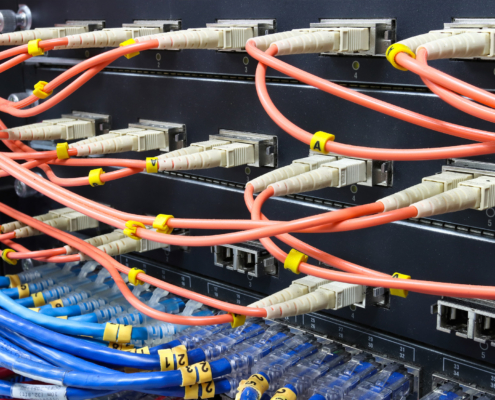 https://ringandping.com/wp-content/uploads/2015/03/The-2015-Ethernet-Roadmap-is-Here.jpg12502000Abstrakt Marketing/wp-content/uploads/2024/05/ringandping_logo.svgAbstrakt Marketing2015-03-22 15:15:582025-07-03 13:41:13The 2015 Ethernet Roadmap is Here
https://ringandping.com/wp-content/uploads/2015/03/The-2015-Ethernet-Roadmap-is-Here.jpg12502000Abstrakt Marketing/wp-content/uploads/2024/05/ringandping_logo.svgAbstrakt Marketing2015-03-22 15:15:582025-07-03 13:41:13The 2015 Ethernet Roadmap is Here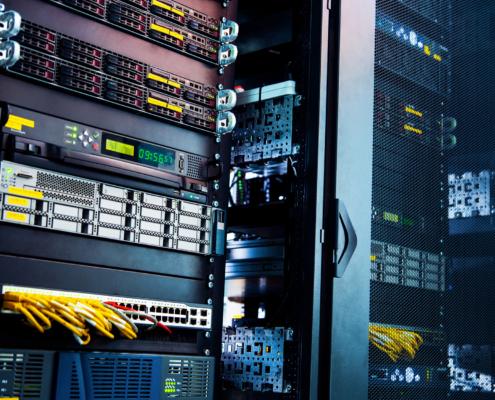 https://ringandping.com/wp-content/uploads/2015/02/Panduit-Introduces-New-HD-Flex-Fiber-Cabling-System.jpg12502000Abstrakt Marketing/wp-content/uploads/2024/05/ringandping_logo.svgAbstrakt Marketing2015-02-12 15:16:582025-07-03 13:41:14Panduit Introduces New HD Flex Fiber Cabling System
https://ringandping.com/wp-content/uploads/2015/02/Panduit-Introduces-New-HD-Flex-Fiber-Cabling-System.jpg12502000Abstrakt Marketing/wp-content/uploads/2024/05/ringandping_logo.svgAbstrakt Marketing2015-02-12 15:16:582025-07-03 13:41:14Panduit Introduces New HD Flex Fiber Cabling System https://ringandping.com/wp-content/uploads/2015/01/Unique-Standards-to-Keep-in-Mind-When-Designing-Networking-Infrastructure-for-Healthcare-Facilities.jpg12502000Abstrakt Marketing/wp-content/uploads/2024/05/ringandping_logo.svgAbstrakt Marketing2015-01-18 17:53:182025-07-03 13:41:14Unique Standards to Keep in Mind When Designing Networking Infrastructure for Healthcare Facilities
https://ringandping.com/wp-content/uploads/2015/01/Unique-Standards-to-Keep-in-Mind-When-Designing-Networking-Infrastructure-for-Healthcare-Facilities.jpg12502000Abstrakt Marketing/wp-content/uploads/2024/05/ringandping_logo.svgAbstrakt Marketing2015-01-18 17:53:182025-07-03 13:41:14Unique Standards to Keep in Mind When Designing Networking Infrastructure for Healthcare Facilities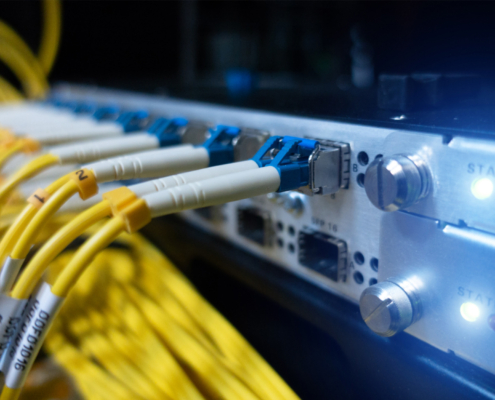 https://ringandping.com/wp-content/uploads/2014/12/Fiber-Optics-and-a-Preventative-Maintenance-Schedule.jpg12502000Abstrakt Marketing/wp-content/uploads/2024/05/ringandping_logo.svgAbstrakt Marketing2014-12-10 17:44:282025-07-03 13:41:15Fiber Optics and a Preventative Maintenance Schedule
https://ringandping.com/wp-content/uploads/2014/12/Fiber-Optics-and-a-Preventative-Maintenance-Schedule.jpg12502000Abstrakt Marketing/wp-content/uploads/2024/05/ringandping_logo.svgAbstrakt Marketing2014-12-10 17:44:282025-07-03 13:41:15Fiber Optics and a Preventative Maintenance Schedule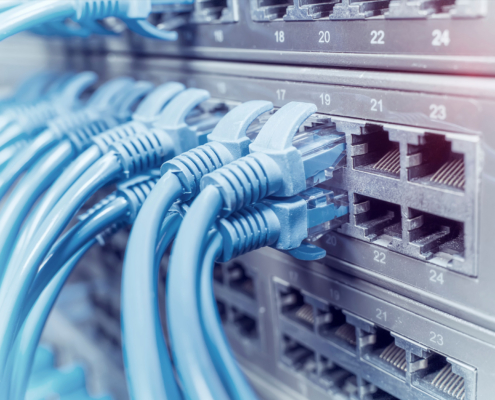 https://ringandping.com/wp-content/uploads/2014/11/Alphabet-Soup-Cat6A-UTP-vs.-FUTP.jpg12502000Abstrakt Marketing/wp-content/uploads/2024/05/ringandping_logo.svgAbstrakt Marketing2014-11-21 17:39:152024-11-08 12:55:35Alphabet Soup: Cat6A UTP vs. F/UTP
https://ringandping.com/wp-content/uploads/2014/11/Alphabet-Soup-Cat6A-UTP-vs.-FUTP.jpg12502000Abstrakt Marketing/wp-content/uploads/2024/05/ringandping_logo.svgAbstrakt Marketing2014-11-21 17:39:152024-11-08 12:55:35Alphabet Soup: Cat6A UTP vs. F/UTP https://ringandping.com/wp-content/uploads/2014/10/Best-Practices-When-Installing-A-Cryptographic-Access-Control-System.jpg12502000Abstrakt Marketing/wp-content/uploads/2024/05/ringandping_logo.svgAbstrakt Marketing2014-10-17 18:26:262025-07-03 13:41:15Best Practices When Installing A Cryptographic Access Control System
https://ringandping.com/wp-content/uploads/2014/10/Best-Practices-When-Installing-A-Cryptographic-Access-Control-System.jpg12502000Abstrakt Marketing/wp-content/uploads/2024/05/ringandping_logo.svgAbstrakt Marketing2014-10-17 18:26:262025-07-03 13:41:15Best Practices When Installing A Cryptographic Access Control System https://ringandping.com/wp-content/uploads/2014/09/Its-Time-For-Your-Yearly-Access-Control-Check-Up.jpg12502000Abstrakt Marketing/wp-content/uploads/2024/05/ringandping_logo.svgAbstrakt Marketing2014-09-15 18:20:482025-07-03 13:41:16It’s Time For Your Yearly Access Control Check-Up
https://ringandping.com/wp-content/uploads/2014/09/Its-Time-For-Your-Yearly-Access-Control-Check-Up.jpg12502000Abstrakt Marketing/wp-content/uploads/2024/05/ringandping_logo.svgAbstrakt Marketing2014-09-15 18:20:482025-07-03 13:41:16It’s Time For Your Yearly Access Control Check-Up https://ringandping.com/wp-content/uploads/2014/08/Network-Cabling-Installation-Companies-Are-Only-As-Good-As-Their-Tools.jpg12502000Abstrakt Marketing/wp-content/uploads/2024/05/ringandping_logo.svgAbstrakt Marketing2014-08-12 18:04:142025-07-03 13:41:17Network Cabling Installation Companies Are Only As Good As Their Tools
https://ringandping.com/wp-content/uploads/2014/08/Network-Cabling-Installation-Companies-Are-Only-As-Good-As-Their-Tools.jpg12502000Abstrakt Marketing/wp-content/uploads/2024/05/ringandping_logo.svgAbstrakt Marketing2014-08-12 18:04:142025-07-03 13:41:17Network Cabling Installation Companies Are Only As Good As Their Tools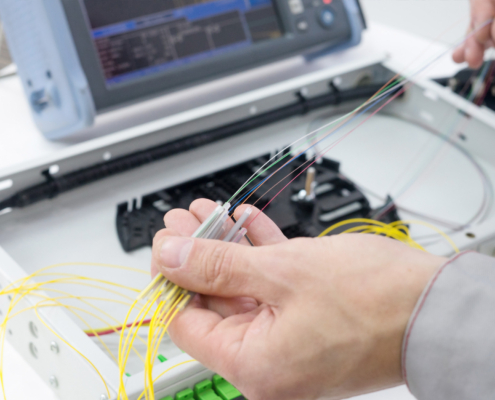 https://ringandping.com/wp-content/uploads/2014/07/Troubleshooting-Common-Fiber-Optic-Problems.jpg12502000Abstrakt Marketing/wp-content/uploads/2024/05/ringandping_logo.svgAbstrakt Marketing2014-07-28 17:55:282025-07-03 13:41:17Troubleshooting Common Fiber Optic Problems
https://ringandping.com/wp-content/uploads/2014/07/Troubleshooting-Common-Fiber-Optic-Problems.jpg12502000Abstrakt Marketing/wp-content/uploads/2024/05/ringandping_logo.svgAbstrakt Marketing2014-07-28 17:55:282025-07-03 13:41:17Troubleshooting Common Fiber Optic Problems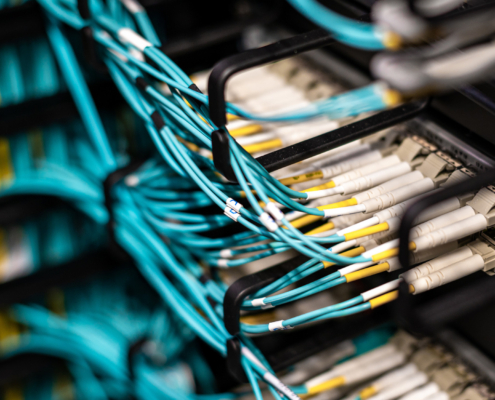 https://ringandping.com/wp-content/uploads/2014/06/Fiber-vs.-Copper-–-Which-Network-Cabling-Is-Right-For-Your-Business.jpg12502000Abstrakt Marketing/wp-content/uploads/2024/05/ringandping_logo.svgAbstrakt Marketing2014-06-27 20:29:232025-07-03 13:41:18Fiber vs. Copper – Which Network Cabling Is Right For Your Business?
https://ringandping.com/wp-content/uploads/2014/06/Fiber-vs.-Copper-–-Which-Network-Cabling-Is-Right-For-Your-Business.jpg12502000Abstrakt Marketing/wp-content/uploads/2024/05/ringandping_logo.svgAbstrakt Marketing2014-06-27 20:29:232025-07-03 13:41:18Fiber vs. Copper – Which Network Cabling Is Right For Your Business? https://ringandping.com/wp-content/uploads/2014/05/Five-Questions-to-Ask-Before-Choosing-a-Video-Surveillance-System.jpg12502000Abstrakt Marketing/wp-content/uploads/2024/05/ringandping_logo.svgAbstrakt Marketing2014-05-27 20:20:372025-07-03 13:41:18Five Questions to Ask Before Choosing a Video Surveillance System
https://ringandping.com/wp-content/uploads/2014/05/Five-Questions-to-Ask-Before-Choosing-a-Video-Surveillance-System.jpg12502000Abstrakt Marketing/wp-content/uploads/2024/05/ringandping_logo.svgAbstrakt Marketing2014-05-27 20:20:372025-07-03 13:41:18Five Questions to Ask Before Choosing a Video Surveillance System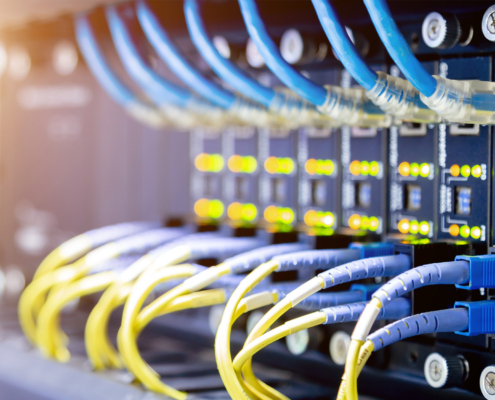 https://ringandping.com/wp-content/uploads/2014/03/Upgrade-Your-Network-With-the-Help-of-a-Fiber-Optic-Contractor.jpg12502000Abstrakt Marketing/wp-content/uploads/2024/05/ringandping_logo.svgAbstrakt Marketing2014-03-08 16:09:392025-07-03 13:41:19Upgrade Your Network With the Help of a Fiber Optic Contractor
https://ringandping.com/wp-content/uploads/2014/03/Upgrade-Your-Network-With-the-Help-of-a-Fiber-Optic-Contractor.jpg12502000Abstrakt Marketing/wp-content/uploads/2024/05/ringandping_logo.svgAbstrakt Marketing2014-03-08 16:09:392025-07-03 13:41:19Upgrade Your Network With the Help of a Fiber Optic Contractor https://ringandping.com/wp-content/uploads/2014/02/Secure-Your-Business-With-An-Access-Control-System.jpg12502000Abstrakt Marketing/wp-content/uploads/2024/05/ringandping_logo.svgAbstrakt Marketing2014-02-07 21:15:442025-07-03 13:41:19Secure Your Business With An Access Control System
https://ringandping.com/wp-content/uploads/2014/02/Secure-Your-Business-With-An-Access-Control-System.jpg12502000Abstrakt Marketing/wp-content/uploads/2024/05/ringandping_logo.svgAbstrakt Marketing2014-02-07 21:15:442025-07-03 13:41:19Secure Your Business With An Access Control System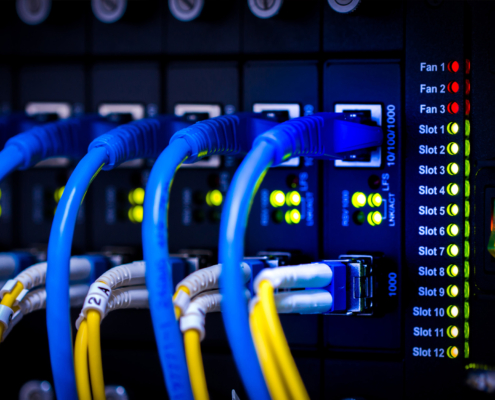 https://ringandping.com/wp-content/uploads/2014/01/How-to-Test-Your-Cat6-Network-Speed.jpg12502000Abstrakt Marketing/wp-content/uploads/2024/05/ringandping_logo.svgAbstrakt Marketing2014-01-04 18:31:132025-07-03 13:41:19How to Test Your Cat6 Network Speed
https://ringandping.com/wp-content/uploads/2014/01/How-to-Test-Your-Cat6-Network-Speed.jpg12502000Abstrakt Marketing/wp-content/uploads/2024/05/ringandping_logo.svgAbstrakt Marketing2014-01-04 18:31:132025-07-03 13:41:19How to Test Your Cat6 Network Speed https://ringandping.com/wp-content/uploads/2013/12/Improve-Customer-Experience-with-an-Office-Paging-System.jpg12502000Abstrakt Marketing/wp-content/uploads/2024/05/ringandping_logo.svgAbstrakt Marketing2013-12-08 17:35:202025-07-03 13:41:20Improve Customer Experience with an Office Paging System
https://ringandping.com/wp-content/uploads/2013/12/Improve-Customer-Experience-with-an-Office-Paging-System.jpg12502000Abstrakt Marketing/wp-content/uploads/2024/05/ringandping_logo.svgAbstrakt Marketing2013-12-08 17:35:202025-07-03 13:41:20Improve Customer Experience with an Office Paging System https://ringandping.com/wp-content/uploads/2013/11/New-Office-Space-in-Irvine-Call-in-a-Network-Cabling-Installation-Team-to-Limit-Downtime.jpg12502000Abstrakt Marketing/wp-content/uploads/2024/05/ringandping_logo.svgAbstrakt Marketing2013-11-27 20:09:082025-07-03 13:41:21New Office Space in Irvine? Call in a Network Cabling Installation Team to Limit Downtime
https://ringandping.com/wp-content/uploads/2013/11/New-Office-Space-in-Irvine-Call-in-a-Network-Cabling-Installation-Team-to-Limit-Downtime.jpg12502000Abstrakt Marketing/wp-content/uploads/2024/05/ringandping_logo.svgAbstrakt Marketing2013-11-27 20:09:082025-07-03 13:41:21New Office Space in Irvine? Call in a Network Cabling Installation Team to Limit Downtime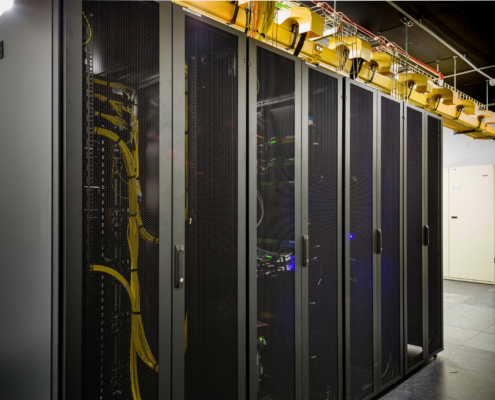 https://ringandping.com/wp-content/uploads/2013/10/A-Network-Rack-Can-Help-You-Avoid-Server-Room-Spaghetti.jpg12502000Abstrakt Marketing/wp-content/uploads/2024/05/ringandping_logo.svgAbstrakt Marketing2013-10-15 15:13:422025-07-03 13:41:21A Network Rack Can Help You Avoid Server Room Spaghetti
https://ringandping.com/wp-content/uploads/2013/10/A-Network-Rack-Can-Help-You-Avoid-Server-Room-Spaghetti.jpg12502000Abstrakt Marketing/wp-content/uploads/2024/05/ringandping_logo.svgAbstrakt Marketing2013-10-15 15:13:422025-07-03 13:41:21A Network Rack Can Help You Avoid Server Room Spaghetti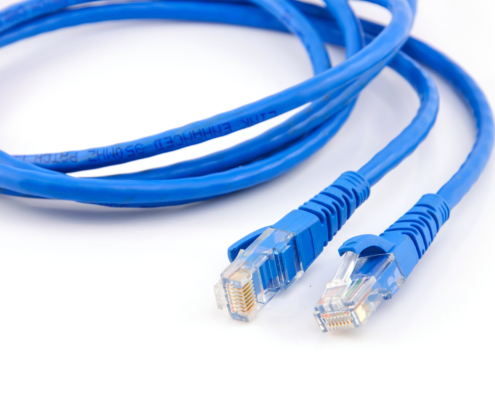 https://ringandping.com/wp-content/uploads/2013/09/Cat5-vs-Cat6-–-Whats-The-Difference.jpg12502000Abstrakt Marketing/wp-content/uploads/2024/05/ringandping_logo.svgAbstrakt Marketing2013-09-22 15:10:572025-07-03 13:41:22Cat5 vs Cat6 – What’s The Difference?
https://ringandping.com/wp-content/uploads/2013/09/Cat5-vs-Cat6-–-Whats-The-Difference.jpg12502000Abstrakt Marketing/wp-content/uploads/2024/05/ringandping_logo.svgAbstrakt Marketing2013-09-22 15:10:572025-07-03 13:41:22Cat5 vs Cat6 – What’s The Difference? https://ringandping.com/wp-content/uploads/2013/07/What-To-Look-For-When-Comparing-Fiber-Optic-Installation-Companies.jpg12502000Abstrakt Marketing/wp-content/uploads/2024/05/ringandping_logo.svgAbstrakt Marketing2013-07-06 16:44:132025-07-03 13:41:23What To Look For When Comparing Fiber Optic Installation Companies
https://ringandping.com/wp-content/uploads/2013/07/What-To-Look-For-When-Comparing-Fiber-Optic-Installation-Companies.jpg12502000Abstrakt Marketing/wp-content/uploads/2024/05/ringandping_logo.svgAbstrakt Marketing2013-07-06 16:44:132025-07-03 13:41:23What To Look For When Comparing Fiber Optic Installation Companies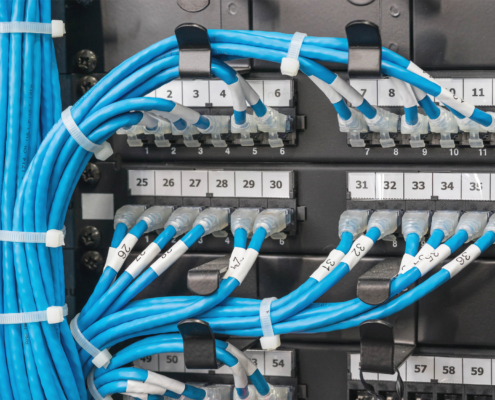 https://ringandping.com/wp-content/uploads/2013/06/Why-Choose-Us-As-Your-Network-Cabling-Services-Provider.jpg12502000Abstrakt Marketing/wp-content/uploads/2024/05/ringandping_logo.svgAbstrakt Marketing2013-06-07 15:09:582025-07-03 13:41:23Why Choose Us As Your Network Cabling Services Provider?
https://ringandping.com/wp-content/uploads/2013/06/Why-Choose-Us-As-Your-Network-Cabling-Services-Provider.jpg12502000Abstrakt Marketing/wp-content/uploads/2024/05/ringandping_logo.svgAbstrakt Marketing2013-06-07 15:09:582025-07-03 13:41:23Why Choose Us As Your Network Cabling Services Provider?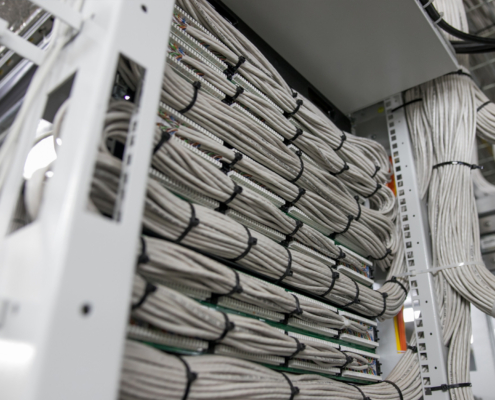 https://ringandping.com/wp-content/uploads/2013/02/What-Makes-Our-Network-Cabling-Services-Unique.jpg12502000Abstrakt Marketing/wp-content/uploads/2024/05/ringandping_logo.svgAbstrakt Marketing2013-02-26 17:33:572025-07-03 13:41:24What Makes Our Network Cabling Services Unique?
https://ringandping.com/wp-content/uploads/2013/02/What-Makes-Our-Network-Cabling-Services-Unique.jpg12502000Abstrakt Marketing/wp-content/uploads/2024/05/ringandping_logo.svgAbstrakt Marketing2013-02-26 17:33:572025-07-03 13:41:24What Makes Our Network Cabling Services Unique? https://ringandping.com/wp-content/uploads/2013/02/Key-4-Differences-Between-IP-cameras-And-Analog-cameras.jpg12502000Abstrakt Marketing/wp-content/uploads/2024/05/ringandping_logo.svgAbstrakt Marketing2013-02-13 16:46:422025-07-03 13:41:25Key 4 Differences Between IP cameras And Analog cameras
https://ringandping.com/wp-content/uploads/2013/02/Key-4-Differences-Between-IP-cameras-And-Analog-cameras.jpg12502000Abstrakt Marketing/wp-content/uploads/2024/05/ringandping_logo.svgAbstrakt Marketing2013-02-13 16:46:422025-07-03 13:41:25Key 4 Differences Between IP cameras And Analog cameras https://ringandping.com/wp-content/uploads/2013/01/Surveillance-Systems-–-Get-Outstanding-JVC-Video-Surveillance-Cameras.jpg12502000Abstrakt Marketing/wp-content/uploads/2024/05/ringandping_logo.svgAbstrakt Marketing2013-01-07 19:57:012025-07-03 13:41:26Surveillance Systems – Get Outstanding JVC Video Surveillance Cameras
https://ringandping.com/wp-content/uploads/2013/01/Surveillance-Systems-–-Get-Outstanding-JVC-Video-Surveillance-Cameras.jpg12502000Abstrakt Marketing/wp-content/uploads/2024/05/ringandping_logo.svgAbstrakt Marketing2013-01-07 19:57:012025-07-03 13:41:26Surveillance Systems – Get Outstanding JVC Video Surveillance Cameras https://ringandping.com/wp-content/uploads/2012/12/Essential-Aspects-of-Network-Cabling-Systems.jpg12502000Abstrakt Marketing/wp-content/uploads/2024/05/ringandping_logo.svgAbstrakt Marketing2012-12-07 03:35:292025-07-03 13:41:26Essential Aspects of Network Cabling Systems
https://ringandping.com/wp-content/uploads/2012/12/Essential-Aspects-of-Network-Cabling-Systems.jpg12502000Abstrakt Marketing/wp-content/uploads/2024/05/ringandping_logo.svgAbstrakt Marketing2012-12-07 03:35:292025-07-03 13:41:26Essential Aspects of Network Cabling Systems https://ringandping.com/wp-content/uploads/2012/11/Protect-and-Grow-Your-Business-with-the-Best-Surveillance-Systems.jpg12502000Abstrakt Marketing/wp-content/uploads/2024/05/ringandping_logo.svgAbstrakt Marketing2012-11-19 18:37:342025-07-03 13:41:27Protect and Grow Your Business with the Best Surveillance Systems
https://ringandping.com/wp-content/uploads/2012/11/Protect-and-Grow-Your-Business-with-the-Best-Surveillance-Systems.jpg12502000Abstrakt Marketing/wp-content/uploads/2024/05/ringandping_logo.svgAbstrakt Marketing2012-11-19 18:37:342025-07-03 13:41:27Protect and Grow Your Business with the Best Surveillance Systems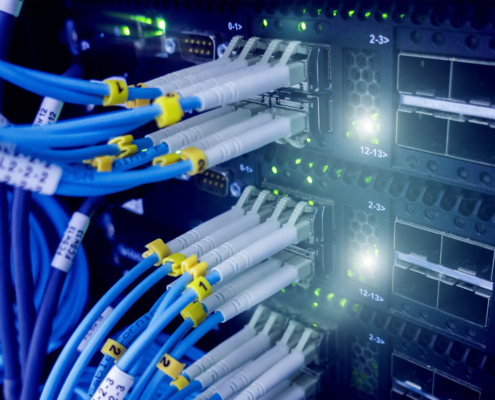 https://ringandping.com/wp-content/uploads/2012/10/Fiber-optics-–-Communication-Signal-Transmission-System-for-the-Future.jpg12502000Abstrakt Marketing/wp-content/uploads/2024/05/ringandping_logo.svgAbstrakt Marketing2012-10-12 04:09:522025-07-03 13:41:28Fiber-optics – Communication Signal Transmission System for the Future
https://ringandping.com/wp-content/uploads/2012/10/Fiber-optics-–-Communication-Signal-Transmission-System-for-the-Future.jpg12502000Abstrakt Marketing/wp-content/uploads/2024/05/ringandping_logo.svgAbstrakt Marketing2012-10-12 04:09:522025-07-03 13:41:28Fiber-optics – Communication Signal Transmission System for the Future https://ringandping.com/wp-content/uploads/2012/09/Surveillance-Systems-–-A-Wide-Range-of-Surveillance-Systems-is-Available.jpg12502000Abstrakt Marketing/wp-content/uploads/2024/05/ringandping_logo.svgAbstrakt Marketing2012-09-25 17:34:202025-07-03 13:41:29Surveillance Systems – A Wide Range of Surveillance Systems is Available
https://ringandping.com/wp-content/uploads/2012/09/Surveillance-Systems-–-A-Wide-Range-of-Surveillance-Systems-is-Available.jpg12502000Abstrakt Marketing/wp-content/uploads/2024/05/ringandping_logo.svgAbstrakt Marketing2012-09-25 17:34:202025-07-03 13:41:29Surveillance Systems – A Wide Range of Surveillance Systems is Available https://ringandping.com/wp-content/uploads/2012/09/Surveillance-Systems-–-A-Cost-Effective-Security-Solution-for-Your-Business.jpg12502000Abstrakt Marketing/wp-content/uploads/2024/05/ringandping_logo.svgAbstrakt Marketing2012-09-12 14:42:302025-07-03 13:41:29Surveillance Systems – A Cost Effective Security Solution for Your Business
https://ringandping.com/wp-content/uploads/2012/09/Surveillance-Systems-–-A-Cost-Effective-Security-Solution-for-Your-Business.jpg12502000Abstrakt Marketing/wp-content/uploads/2024/05/ringandping_logo.svgAbstrakt Marketing2012-09-12 14:42:302025-07-03 13:41:29Surveillance Systems – A Cost Effective Security Solution for Your Business https://ringandping.com/wp-content/uploads/2012/08/The-Essentials-of-Network-Cabling.jpg12502000Abstrakt Marketing/wp-content/uploads/2024/05/ringandping_logo.svgAbstrakt Marketing2012-08-31 02:27:312025-07-03 13:41:30The Essentials of Network Cabling
https://ringandping.com/wp-content/uploads/2012/08/The-Essentials-of-Network-Cabling.jpg12502000Abstrakt Marketing/wp-content/uploads/2024/05/ringandping_logo.svgAbstrakt Marketing2012-08-31 02:27:312025-07-03 13:41:30The Essentials of Network Cabling https://ringandping.com/wp-content/uploads/2012/08/5-Reasons-Why-Your-Business-Needs-A-Suitable-Phone-System.jpg12502000Abstrakt Marketing/wp-content/uploads/2024/05/ringandping_logo.svgAbstrakt Marketing2012-08-28 11:57:252025-07-03 13:41:315 Reasons Why Your Business Needs A Suitable Phone System
https://ringandping.com/wp-content/uploads/2012/08/5-Reasons-Why-Your-Business-Needs-A-Suitable-Phone-System.jpg12502000Abstrakt Marketing/wp-content/uploads/2024/05/ringandping_logo.svgAbstrakt Marketing2012-08-28 11:57:252025-07-03 13:41:315 Reasons Why Your Business Needs A Suitable Phone System https://ringandping.com/wp-content/uploads/2012/08/Reasons-Why-Your-Business-Needs-Advanced-and-Up-to-Date-AudioVisual-Systems.jpg12502000Abstrakt Marketing/wp-content/uploads/2024/05/ringandping_logo.svgAbstrakt Marketing2012-08-22 02:42:522025-07-03 13:41:32Reasons Why Your Business Needs Advanced and Up to Date Audio/Visual Systems
https://ringandping.com/wp-content/uploads/2012/08/Reasons-Why-Your-Business-Needs-Advanced-and-Up-to-Date-AudioVisual-Systems.jpg12502000Abstrakt Marketing/wp-content/uploads/2024/05/ringandping_logo.svgAbstrakt Marketing2012-08-22 02:42:522025-07-03 13:41:32Reasons Why Your Business Needs Advanced and Up to Date Audio/Visual Systems https://ringandping.com/wp-content/uploads/2012/08/Why-Get-Surveillance-System-For-Your-Business.jpg12502000Abstrakt Marketing/wp-content/uploads/2024/05/ringandping_logo.svgAbstrakt Marketing2012-08-03 23:00:242025-07-03 13:41:33Why Get Surveillance System For Your Business?
https://ringandping.com/wp-content/uploads/2012/08/Why-Get-Surveillance-System-For-Your-Business.jpg12502000Abstrakt Marketing/wp-content/uploads/2024/05/ringandping_logo.svgAbstrakt Marketing2012-08-03 23:00:242025-07-03 13:41:33Why Get Surveillance System For Your Business?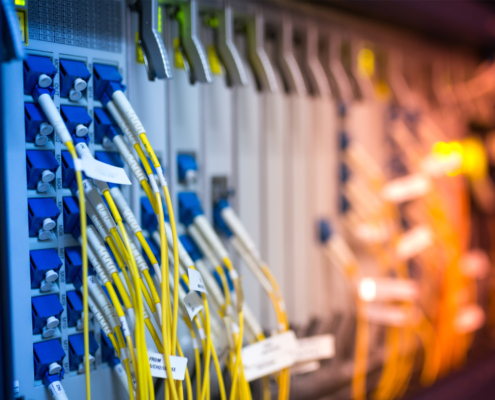 https://ringandping.com/wp-content/uploads/2012/08/Fiber-optic-Communication-Is-Essential-For-Todays-Business.jpg12502000Abstrakt Marketing/wp-content/uploads/2024/05/ringandping_logo.svgAbstrakt Marketing2012-08-01 02:50:112025-07-03 13:41:34Fiber-optic Communication Is Essential For Today’s Business
https://ringandping.com/wp-content/uploads/2012/08/Fiber-optic-Communication-Is-Essential-For-Todays-Business.jpg12502000Abstrakt Marketing/wp-content/uploads/2024/05/ringandping_logo.svgAbstrakt Marketing2012-08-01 02:50:112025-07-03 13:41:34Fiber-optic Communication Is Essential For Today’s Business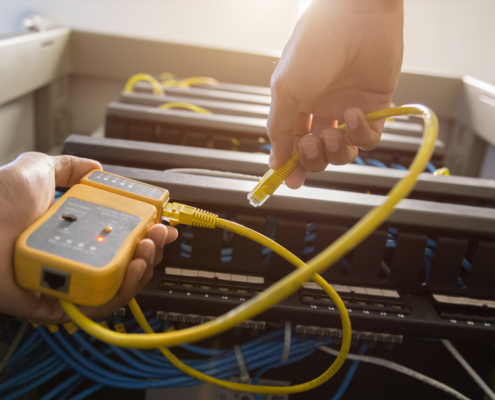 https://ringandping.com/wp-content/uploads/2012/07/Know-Exactly-What-Your-Business-Needs-–-The-Network-Cabling-Basics.jpg12502000Abstrakt Marketing/wp-content/uploads/2024/05/ringandping_logo.svgAbstrakt Marketing2012-07-31 03:11:312025-07-03 13:41:34Know Exactly What Your Business Needs – The Network Cabling Basics
https://ringandping.com/wp-content/uploads/2012/07/Know-Exactly-What-Your-Business-Needs-–-The-Network-Cabling-Basics.jpg12502000Abstrakt Marketing/wp-content/uploads/2024/05/ringandping_logo.svgAbstrakt Marketing2012-07-31 03:11:312025-07-03 13:41:34Know Exactly What Your Business Needs – The Network Cabling Basics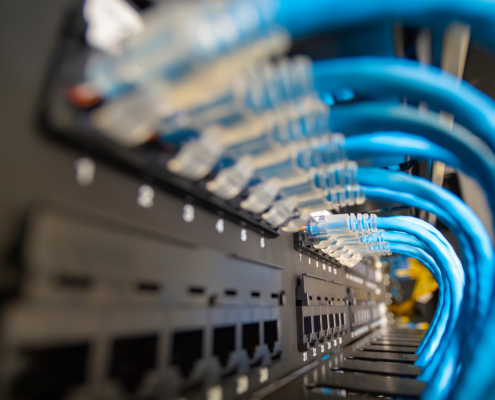 https://ringandping.com/wp-content/uploads/2012/07/Its-Important-to-Specify-Your-Network-Wiring-and-Cabling-Needs.jpg12502000Abstrakt Marketing/wp-content/uploads/2024/05/ringandping_logo.svgAbstrakt Marketing2012-07-26 14:59:052025-07-03 13:41:35It’s Important to Specify Your Network Wiring and Cabling Needs
https://ringandping.com/wp-content/uploads/2012/07/Its-Important-to-Specify-Your-Network-Wiring-and-Cabling-Needs.jpg12502000Abstrakt Marketing/wp-content/uploads/2024/05/ringandping_logo.svgAbstrakt Marketing2012-07-26 14:59:052025-07-03 13:41:35It’s Important to Specify Your Network Wiring and Cabling Needs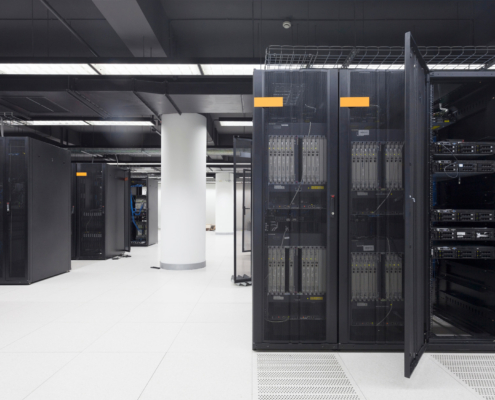 https://ringandping.com/wp-content/uploads/2012/07/Our-Diverse-Data-Network-Cabling-Installation-Services.jpg12502000Abstrakt Marketing/wp-content/uploads/2024/05/ringandping_logo.svgAbstrakt Marketing2012-07-10 01:36:592025-07-03 13:41:36Our Diverse Data Network Cabling Installation Services
https://ringandping.com/wp-content/uploads/2012/07/Our-Diverse-Data-Network-Cabling-Installation-Services.jpg12502000Abstrakt Marketing/wp-content/uploads/2024/05/ringandping_logo.svgAbstrakt Marketing2012-07-10 01:36:592025-07-03 13:41:36Our Diverse Data Network Cabling Installation Services https://ringandping.com/wp-content/uploads/2012/07/5-Things-to-Look-For-In-a-Network-Cabling-Company.jpg12502000Abstrakt Marketing/wp-content/uploads/2024/05/ringandping_logo.svgAbstrakt Marketing2012-07-06 05:55:492025-07-03 13:41:365 Things to Look For In a Network Cabling Company
https://ringandping.com/wp-content/uploads/2012/07/5-Things-to-Look-For-In-a-Network-Cabling-Company.jpg12502000Abstrakt Marketing/wp-content/uploads/2024/05/ringandping_logo.svgAbstrakt Marketing2012-07-06 05:55:492025-07-03 13:41:365 Things to Look For In a Network Cabling Company https://ringandping.com/wp-content/uploads/2012/06/Overhead-Paging-Systems.jpg12502000Abstrakt Marketing/wp-content/uploads/2024/05/ringandping_logo.svgAbstrakt Marketing2012-06-29 00:34:492025-07-03 13:41:36Overhead Paging Systems
https://ringandping.com/wp-content/uploads/2012/06/Overhead-Paging-Systems.jpg12502000Abstrakt Marketing/wp-content/uploads/2024/05/ringandping_logo.svgAbstrakt Marketing2012-06-29 00:34:492025-07-03 13:41:36Overhead Paging Systems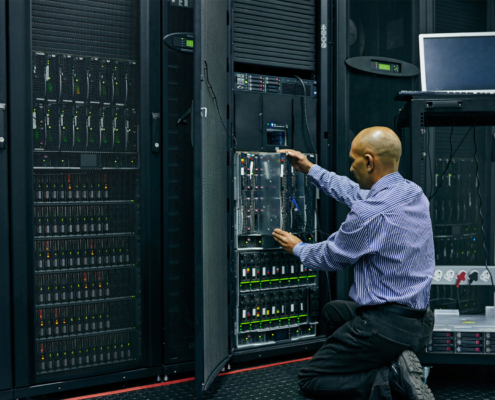 https://ringandping.com/wp-content/uploads/2012/06/Cleaning-up-Network-Cabling-For-Data-Centers.jpg12502000Abstrakt Marketing/wp-content/uploads/2024/05/ringandping_logo.svgAbstrakt Marketing2012-06-05 22:42:272025-07-03 13:41:37Cleaning up Network Cabling For Data Centers
https://ringandping.com/wp-content/uploads/2012/06/Cleaning-up-Network-Cabling-For-Data-Centers.jpg12502000Abstrakt Marketing/wp-content/uploads/2024/05/ringandping_logo.svgAbstrakt Marketing2012-06-05 22:42:272025-07-03 13:41:37Cleaning up Network Cabling For Data CentersThis site uses cookies. By continuing to browse the site, you are agreeing to our use of cookies.
OKLearn moreWe may request cookies to be set on your device. We use cookies to let us know when you visit our websites, how you interact with us, to enrich your user experience, and to customize your relationship with our website.
Click on the different category headings to find out more. You can also change some of your preferences. Note that blocking some types of cookies may impact your experience on our websites and the services we are able to offer.
These cookies are strictly necessary to provide you with services available through our website and to use some of its features.
Because these cookies are strictly necessary to deliver the website, refusing them will have impact how our site functions. You always can block or delete cookies by changing your browser settings and force blocking all cookies on this website. But this will always prompt you to accept/refuse cookies when revisiting our site.
We fully respect if you want to refuse cookies but to avoid asking you again and again kindly allow us to store a cookie for that. You are free to opt out any time or opt in for other cookies to get a better experience. If you refuse cookies we will remove all set cookies in our domain.
We provide you with a list of stored cookies on your computer in our domain so you can check what we stored. Due to security reasons we are not able to show or modify cookies from other domains. You can check these in your browser security settings.
We also use different external services like Google Webfonts, Google Maps, and external Video providers. Since these providers may collect personal data like your IP address we allow you to block them here. Please be aware that this might heavily reduce the functionality and appearance of our site. Changes will take effect once you reload the page.
Google Webfont Settings:
Google Map Settings:
Google reCaptcha Settings:
Vimeo and Youtube video embeds:
Network cabling standards are essential for ensuring compatibility and performance in communication systems. These standards dictate the specifications for cabling types, installation practices, and performance benchmarks that must be met for reliable data transmission.
For instance, standards such as TIA/EIA-568 define the requirements for structured cabling systems, including the types of cabling (like Cat5e, Cat6, and fiber optics) and their applications. Adhering to these standards not only guarantees optimal performance but also simplifies troubleshooting and upgrades in the future.
Fiber optic technology is rapidly evolving, bringing significant advancements to commercial applications. Its ability to transmit data over long distances at high speeds makes it an ideal choice for businesses looking to enhance their network capabilities.
Emerging technologies, such as 5G and IoT, are driving the demand for faster and more reliable internet connections, further solidifying fiber optics as a critical component of modern infrastructure. Businesses that invest in fiber optic installations can expect improved bandwidth, reduced latency, and enhanced overall performance.
Maintaining a robust network infrastructure is crucial for ensuring uninterrupted business operations. Regular maintenance practices, such as routine inspections, cable management, and performance testing, help identify potential issues before they escalate into costly downtime.
Implementing a proactive maintenance schedule not only extends the lifespan of your network components but also optimizes performance. For example, keeping cables organized and free from interference can significantly enhance signal quality and reduce the likelihood of network failures.
As cyber threats continue to evolve, innovations in network security are essential for safeguarding business data. Implementing advanced security measures, such as firewalls, intrusion detection systems, and secure access controls, can protect sensitive information from unauthorized access.
Additionally, utilizing AI-driven security solutions can enhance threat detection and response capabilities, allowing businesses to stay ahead of potential vulnerabilities. By prioritizing network security, companies can ensure that their operations remain secure and compliant with industry regulations.